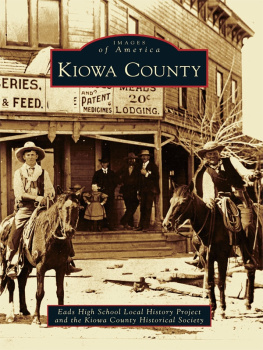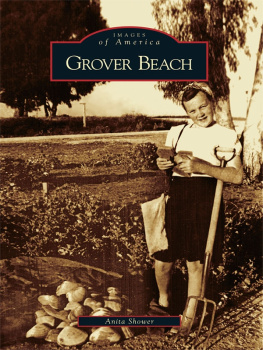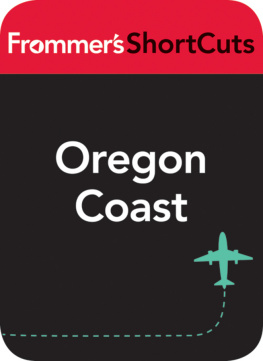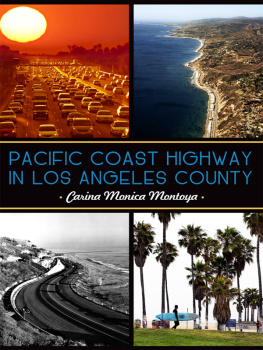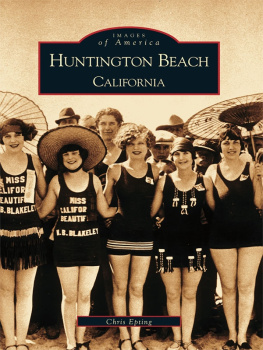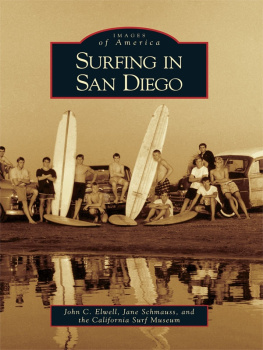
IMAGES
of America
SOLANA BEACH
ON THE COVER: This 1930s photograph shows the original Solana Beach Train Station, which was completed in 1924. Through constant communication with the Santa Fe Railroad, Ed Fletcher, one of the major developers of Solana Beach, persuaded the rail giant to help fund a station to serve the fledging suburb of San Diego. By the 1960s, the station had become obsolete. Solana Beach would not receive another station of its own until 1995, when it became a flourishing transit center for Amtrak and the San Diego County commuter rail, the Coaster. (Courtesy of the Mandeville Special Collections Library, University of California, San Diego.)
IMAGES
of America
SOLANA BEACH
Matthew Thompson and Hilary White

Copyright 2015 by Matthew Thompson and Hilary White
ISBN 978-1-4671-3325-8
Ebook ISBN 9781439654545
Published by Arcadia Publishing
Charleston, South Carolina
Library of Congress Control Number: 2014953878
For all general information, please contact Arcadia Publishing:
Telephone 843-853-2070
Fax 843-853-0044
E-mail
For customer service and orders:
Toll-Free 1-888-313-2665
Visit us on the Internet at www.arcadiapublishing.com
I would like to dedicate this book to my favorite citizen of Solana Beach, my father, Tom Thompson.
CONTENTS
ACKNOWLEDGMENTS
A special thanks must go to the Solana Beach Civic and Historical Society; the San Dieguito Heritage Museum; the Solana Beach Department of Marine Safety; Mandeville Special Collections Library, University of California, San Diego; the San Diego History Center; David Ellenstein at North Coast Repertory Theatre; Aaron Rumley at North Coast Repertory Theatre; Julianne Eggold; Teresa Rincon and Tonys Jacal; and Fidels Mexican Restaurant. All photographs not credited are part of the authors personal collection.
Thanks also to our editors at Arcadia Publishing, Alyssa Jones and Lily Watkins, for all their help, encouragement, and invaluable advice during the compilation of this book.
INTRODUCTION
Sunshine Beach: the Spanish-translated moniker for Solana Beach could not fit this shining city more than that. Since the time Native American Kumeyaay fished and foraged along the coast and gathered acorns, pion nuts, and other edibles on the sloping hills, the area has always been a haven for home, recreation, and a way of life.
In 1769, while under Spanish control, Don Gaspar de Portola paved the first major roadway in California, El Camino Real, a 500-mile-long trail that stretched from San Diego to Monterey. The dusty superhighway of the past ran adjacent to modern-day Solana Beach. It would be an important link for the burgeoning township in the years leading up to its development.
Control of the area passed to Mexico when it gained independence from Spain in 1821. Many of the inhabitants were sons and grandsons of the original Spanish settlers, who became influential in government and were owners of enormous land areas known as ranchos. Many thousands of acres in what is now San Diego County became privately owned during the Mexican regime. In 1836, Don Juan Maria Osuna, then-mayor of the city of San Diego, claimed the 8,800 acres known as Rancho San Dieguito that would include all of modern-day Solana Beach.
Following the Mexican War with the United States, California became a US territory and on September 9, 1850, was admitted to the Union. The county of San Diego was established by the state legislature that same year, when the population of the entire county was numbered at 790, not counting the thousands of native Kumeyaay who had called the area their home for thousands of years. The first American homesteader in the vast San Luis Rey District was William A. Ewing, who took up 180 acres in the San Dieguito River Valley in 1862, although modern-day Solana Beach was uninhabited until a farmer named George H. Jones established the first of two ranches to cultivate lima beans in 1908.
The area encompassing Solana Beach began to develop slowly when adjacent Lake Hodges Dam was completed in 1918. The creation of the 12,000-acre Santa Fe Irrigation District ensured that the area from Rancho Santa Fe through Solana Beach would prosper and expand. In response to irrigation and the ability to tap freshwater, the coastline began to boom in the early 1920s. At this time, Solana Beach had no true shoreline, as the Pacific Ocean crashed into the cliff walls.
The Surf Line train route of the Atchison, Topeka and Santa Fe Railway (AT&SF) was completed in the 1880s and connected San Diego to neighboring Los Angeles, which allowed goods and services to be routed to the county. About this time, the Stevens family purchased hundreds of acres of what is now known as Solana Beach and Rancho Santa Fe. In 1922, Col. Ed Fletcher, an early community leader and developer, purchased 140 acres of the surrounding area to develop what is now known as downtown Solana Beach with the help of his brother-in-law Eugene Batchelder. Fletcher convinced the AT&SF to build a train station in the early 1920s.
George Jones took it upon himself to provide access to the beach in order to spur real estate development. Fletcher Cove was created by eroding tons of earth that formed the coastal bluff using a single fire hose with hydraulic water pressure. The beach was opened with great fanfare, including horse races, on July 4, 1925. It was also around this time that the area informally changed its name from Lockwood Mesa to Solana Beach.
Fletcher envisioned the area as an up-and-coming suburb of San Diego, but the coming of the Great Depression and World War II postponed that vision until the booming economy took hold once again the 1950s.
The Bill Jack Scientific Instrument Company was formed in 1949 and was housed in Quonset huts, the quirky structures that currently house local businesses in the Cedros Design Center and served as a design element for the 1995 train station. The simple structures were originally constructed as small industrial centers that built reconnaissance photographic equipment, motors, tachometers, helmets, and police equipment. As the largest employer in the area, the workers at the Bill Jack Plant began to purchase land and build homes in the area, creating the suburb of housing that still exists today.
After World War II, Solana Beach created a chamber of commerce and a sanitation and fire district. For a 10-year period between 1950 and 1960, the community underwent tremendous growth. Marview Heights, originally owned by the Santa Fe Irrigation District and later sold as individual homes by Fred Howland Ford and his brother, gave impetus to local residential development. Eden Gardens, one of the oldest residential areas of Solana Beach, was a community formed by Mexican farmers who were hired by owners of large ranches in Rancho Santa Fe. These farmers wanted their families nearby, hence the formation of La Colonia (the colony). The name Eden Gardens came later from a land developer who thought it would be a good marketing tool.
By 1986, San Diego County had grown commercially and artistically, and in 1986 Solana Beach achieved cityhood within the county of San Diego. Today, it is home to more than 13,000 residents. With a major train station, professional theater, and premiere music venue, the tiny town on the edge of the Pacific Ocean has become a jewel of progress. Within its borders, art and design thrive in the Cedros Design District, the music scene flourishes at the Belly Up, and professional actors tread the boards at North Coast Repertory Theatre. Outdoor enthusiasts can bask in the Mediterranean climate at the beach or along the award-winning Rail Trail for walkers and bicyclists.
Next page


